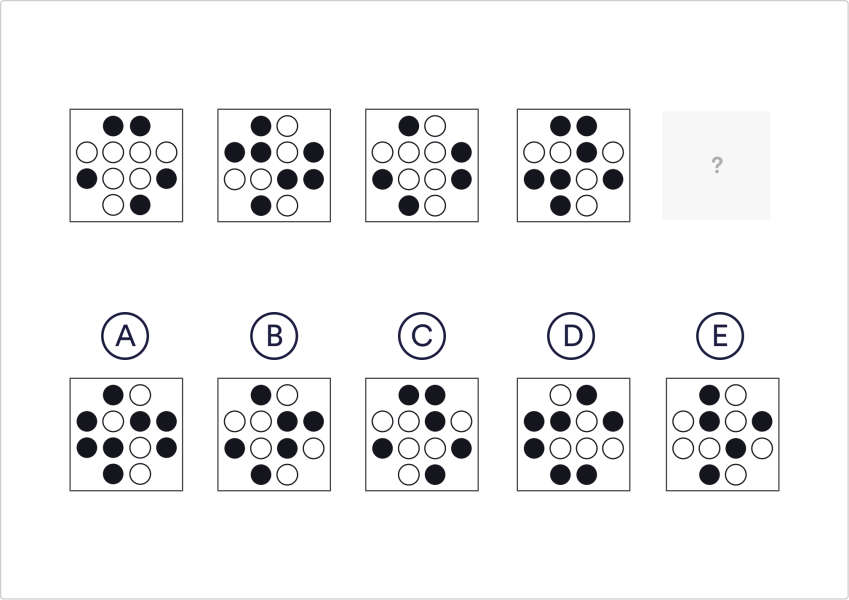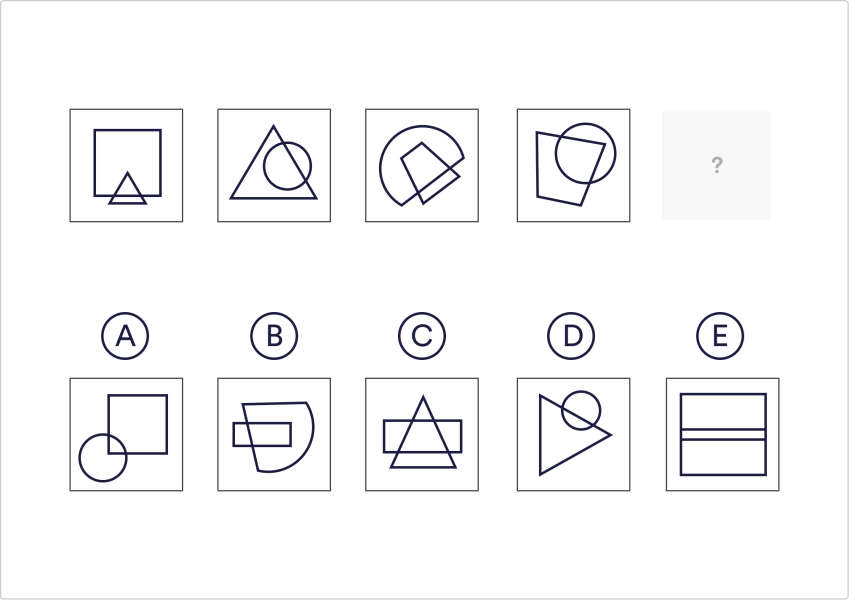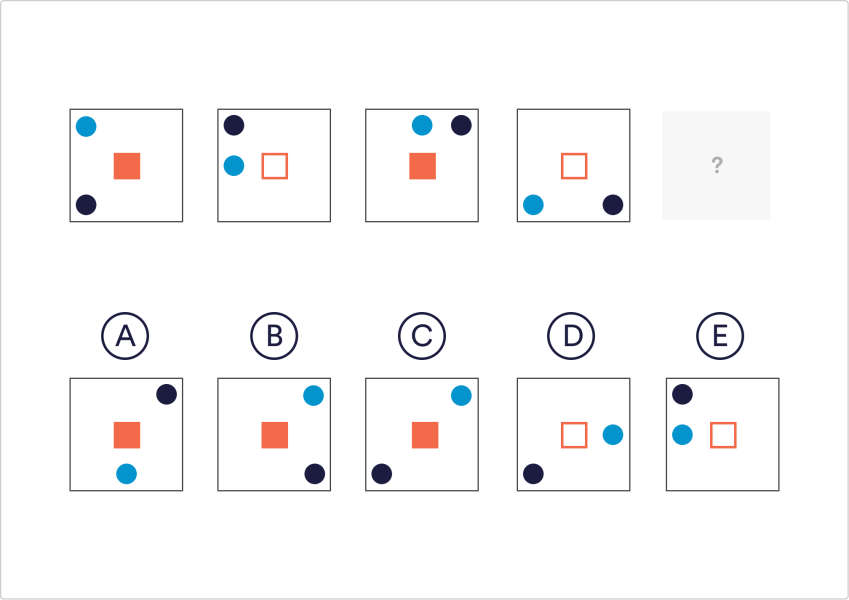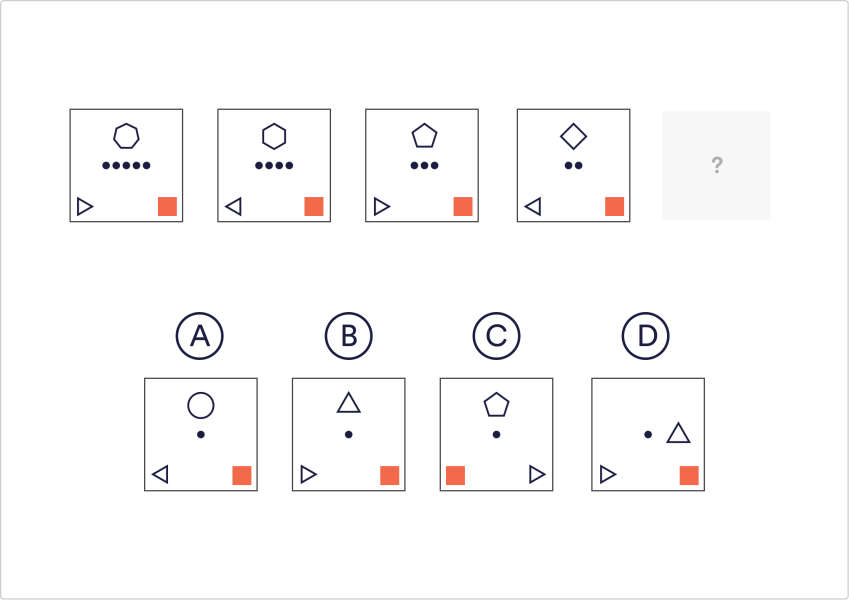Abstract Reasoning Test Questions & Answers
Free Abstract Reasoning Test Questions and Answers
Welcome to our free abstract reasoning test practice questions.
Here are a few abstract reasoning test questions to practice to give you an understanding of what a real abstract reasoning exam will be like. Individuals with strong abstract reasoning skills can interpret and evaluate unfamiliar information to solve new problems. Benefits include increased problem-solving capabilities, creativity, stronger logical thinking, and improved adaptability. Learn more about abstract reasoning. By regularly engaging with practice questions and thoroughly understanding the reasoning behind each answer, you can gradually strengthen your skills and confidence in tackling similar challenges. Remember that proficiency in these tests is developed over time through dedicated effort, persistence, and preparation.
As you continue to practice and learn from the explanations provided, you’ll not only improve your performance but also build a solid foundation of problem-solving strategies that can benefit you in various abstract reasoning assessment scenarios. To pass an abstract reasoning test, it’s essential to develop effective strategies and a structured approach to identifying patterns and solving problems quickly.
Q1) Which shape comes next in the sequence?
A, B, C, D, E
Answer
To solve this pattern pay attention to the sequence as it follows a consistent shift in the number of dots. The black and white dots are alternating between 5 and 7 in number. In the last picture, there are 5 white dots and 7 black ones, meaning the following image should contain 7 white dots and 5 black ones. By understanding this consistent pattern, it can be predicted that the next image will contain 7 white dots and 5 black dots.
Correct Answer; E
Q2) Complete the sequence.
A, B, C, D, E
Answer
Each tile contains two overlapping shapes, with one being larger than the other. When these two shapes intersect, a new, smaller shape is formed within the larger shape. In the next tile, this newly created smaller shape becomes the larger shape for the new overlap. Additionally, when the shapes overlap, the largest division or bisection always occurs within the biggest shape, maintaining a consistent pattern throughout the sequence.
Correct Answer; B
Q3) Complete the sequence.
A, B, C, D, E
Answer
The first two rules are relatively easy to work out. The shape in the centre alternates between orange and white and the navy dot is moving around the tile corners in a clockwise direction. The real challenge is spotting that the big black square is moving around the sides and corners of the tile in alternating directions, first anti-clockwise, then clock-wise. It also increases how many spaces it moves in increments of one. First it moves anti-clockwise one position, next it moves 2 spaces clockwise, then 3 anti-clockwise and so on.
Correct Answer; C
Q4) Which is the odd string of letters out?
A, B, C, D, E
Answer
Each string of letters contains S, F, G, H and J appearing in a loop. It is easier to imagine if you can see multiple loops appearing consecutively: S-F-G-H-J-S-F-G-H-J-S-F-G-H-J A, B, C and D strings all include letters in the right order to fit in the same loop. For example, F always follows S and precedes G however in the last string (E) The letters are out of order.
Correct Answer; E
Q5) Complete the sequence.
A, B, C, D
Answer
There are four consistent rules present in this sequence. First, the number of dots appearing in the centre decreases by one with each step. Similarly, the number of sides on the black shape is also reduced by one. Additionally, the triangle is flipping sideways in one step and then flipping back to its original orientation in the next. Lastly, the square positioned in the corner remains unchanged throughout the sequence.
Correct Answer; B




